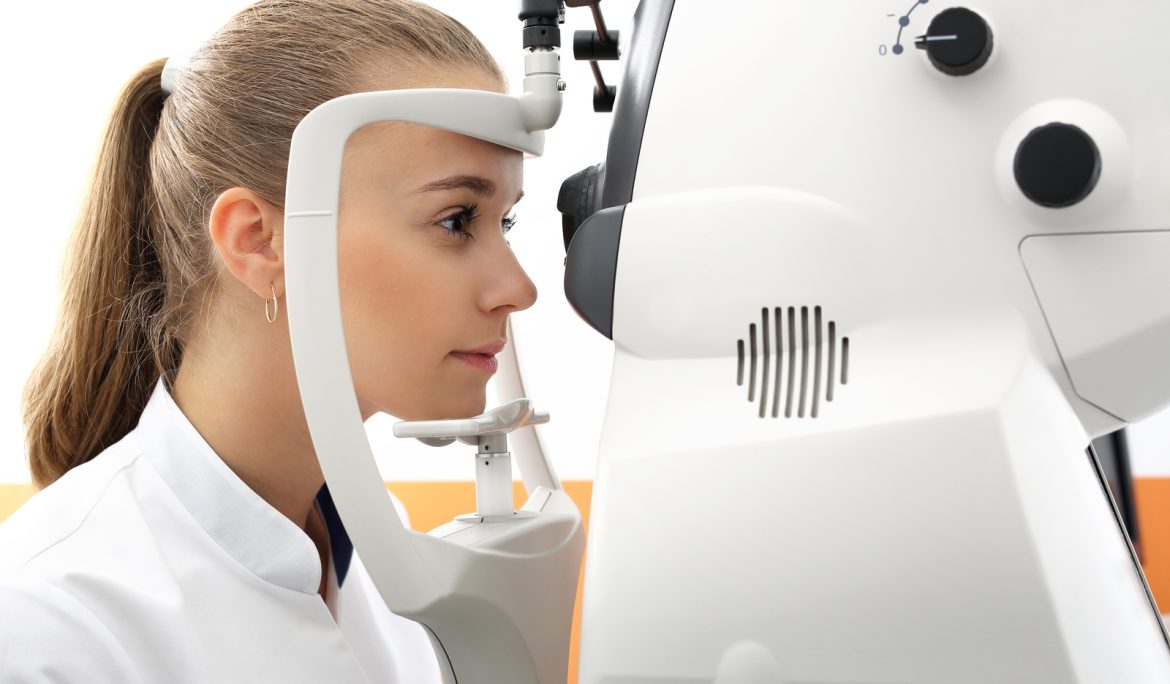Perimetry, also known as visual field testing, is essential in diagnosing and managing various eye conditions. At Chetna Hospital, we prioritize advanced diagnostic tools to ensure optimal eye health for our patients. Visual field testing measures the extent and sensitivity of your peripheral vision. This test is crucial in detecting early signs of glaucoma, retinal diseases, and neurological disorders.
How Perimetry Works?
During a perimetry test, you will sit in front of a dome-shaped device. You will be asked to look at a central point while lights flash at different locations around the dome. Each time you see a light, you press a button. This process maps your visual field, highlighting any areas where your vision may be compromised.
Types of Perimetry Tests
Several types of perimetry tests are available, each serving specific diagnostic purposes:
- Static Perimetry: Measures the sensitivity of your vision at various points in the visual field.
- Kinetic Perimetry: Uses moving stimuli to map out the visual field boundaries.
- Frequency Doubling Technology (FDT) Perimetry: Detects early glaucoma damage by using low-frequency gratings.
Treatment Options
Early detection through perimetry can lead to effective treatment and management of eye conditions. For instance, if glaucoma is detected, medications or surgery might be recommended to reduce intraocular pressure. Retinal diseases may require laser treatments or injections to preserve vision. Regular perimetry tests can monitor the progression of these conditions, allowing for timely adjustments in treatment.
Myths and Facts About Perimetry
Myth: Perimetry is only necessary for older adults.
Fact: Individuals of all ages can benefit from perimetry, especially those with a family history of eye diseases.
Myth: Perimetry tests are uncomfortable and lengthy.
Fact: Most perimetry tests are quick and non-invasive, causing minimal discomfort.
Myth: A normal perimetry test means your eyes are completely healthy.
Fact: While a normal test is good, it doesn’t rule out all eye conditions. Regular comprehensive eye exams are still necessary for monitoring eye health.
Dos and Don’ts for Perimetry Tests
Do: Follow your doctor’s instructions carefully. Proper positioning and focus are crucial for accurate results.
Don’t: Ignore the importance of regular testing. Even if you don’t notice any vision changes, regular perimetry can detect issues early.
Do: Inform your doctor about any medications you’re taking. Some drugs can affect test results.
Don’t: Stress about the test. It’s a straightforward procedure designed to ensure your eye health.
Conclusion
Perimetry is a vital tool in maintaining and protecting your vision. At Chetna Hospital, we utilize advanced perimetry testing to diagnose and monitor various eye conditions effectively. Understanding the importance of visual field testing can lead to early detection and better management of eye diseases. Regular eye exams, including perimetry, are crucial in preserving your vision for years to come. By dispelling myths and adhering to recommended dos and don’ts, you can ensure a smooth and beneficial testing experience. Trust Chetna Hospital to provide comprehensive eye care with the latest technology and compassionate expertise.
For more information or to schedule a perimetry test, contact Chetna Hospital today.













